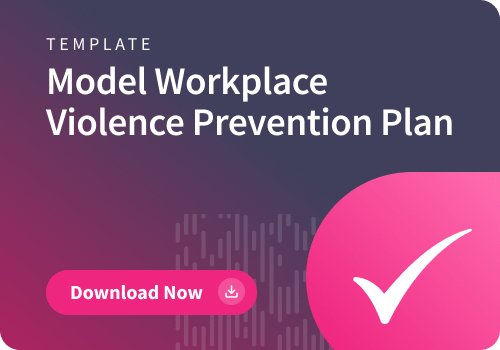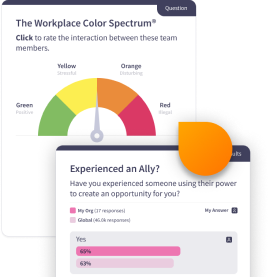
Provide Action Plans in Case Violence Occurs
Course Video Preview
Employee recounts her experience during a company layoff that takes a turn.California’s new SB 553 law required all employers establish a compliant workplace violence prevention strategy and initiate training by July 1, 2024. Similarly, New York's recent Retail Worker Safety Act requires that all retailers, with more than 10 employees, provide a violence prevention plan and train retail employees. Emtrain’s Workplace Violence Prevention Training is specifically designed to meet all CA SB 553 and NY Retail Worker Safety Act training mandates. Our comprehensive course equips your team to identify, report, and respond to potential violence, from early warning signs to active shooter incidents.

Course Description
This workplace violence prevention training course provides important protection for employees by showing how they can spot classic red flag situations and to minimize the potential for violent episodes in the workplace. It also walks employees through an action plan of how to respond if and when workplace violence happens. Interactive polling questions in the workplace violence training prevention course give employers real insight into how employees feel about the concepts and culture skills presented. Emtrain’s innovative Ask the Expert feature gives learners direct access to course experts.
Key Concepts
- The organizational and personal costs of all the forms of workplace violence.
- Learn how to spot the warning signs of potential workplace violence.
- Best practices in response to violence, including active shooter situations.
- Best practices to safeguard the workplace from violence.
Course Features
- Access to our Anonymous Ask the Expert tool
- Rich video scenarios based on real-world events
- Built-in employee sentiment surveys
- 50+ Machine Translation Options
- Optional program timer
- Policy acknowledgement tool
- Extensive customization options

Lessons
The Importance of Being Prepared
What is Workplace Violence?
Identifying Hazards and Assessing Risks
Warning Signs and Red Flags
Emergency Responses and De-Escalation Techniques
Gun Violence and Active Shooter Preparedness
The Manager's Role in Preventing Workplace Violence
Our Workplace Violence Plan, Guidance, and Additional Resources
Our Commitment to Safety
Provide Your Feedback
Relevant Courses
Complementary Microlessons
Recommended Resources
From ‘Ask the Expert’
Emtrain’s Ask the Expert feature enables users to ask questions about compliance, bias, harassment, and diversity & inclusion as they come up. It’s all confidential, and answers are sent straight to their inbox. View some of the example questions below and see the Experts answers.


